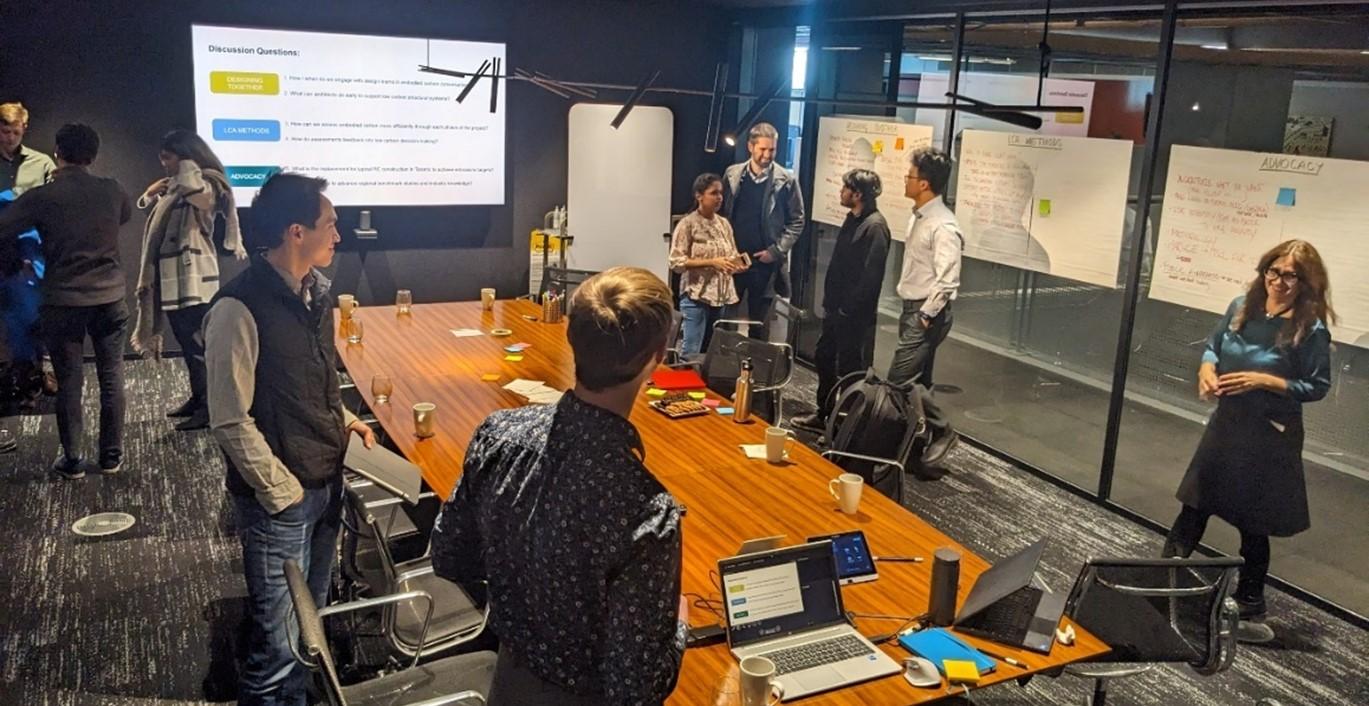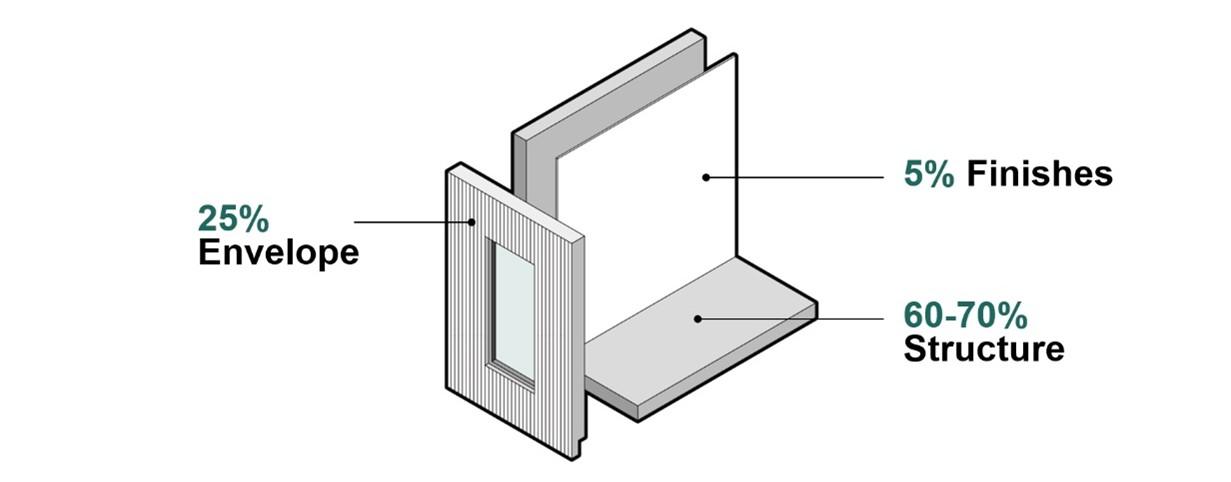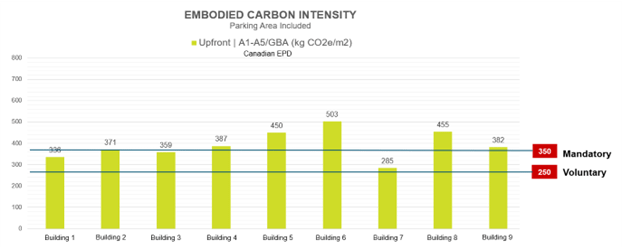World Green Building Week (Sept. 11-15), calls “on the global building and construction sector to accelerate the transition to secure an energy efficient, regenerative and just future for all”. In support of this, we are sharing some of our most recent work around accelerating embodied carbon reductions in multi-unit residential structures.
WE HAVE TEAMED UP WITH TORONTO STRUCTURAL ENGINEERS TO HELP REDUCE OUR EMBODIED CARBON EMISSIONS.
On March 2nd BDP Quadrangle hosted a Symposium on Carbon in Structural Systems to delve into strategies for reducing carbon emissions in structural systems with a focus on residential construction. The event welcomed Toronto engineering firms Entuitive, Honeycomb, Jablonsky Ast & Partners, and RJC to our studio at The Well. Each team shared the results from collaborative embodied carbon studies conducted in parallel with BDP Quadrangle over the course of the months prior. We were also joined by our colleague, Tom Carr, a structural engineer from our BDP London studio, who shared the ongoing progress of our structural teams’ dynamic carbon tool.

Photograph from the Structural Embodied Carbon Symposium held at BDP Quadrangle, March 2023
The symposium offered a platform to share expertise and refine our methodologies for Life-cycle assessments (LCA). This initiative aims to fill the knowledge gap as our industry quickly embraces the challenge of reducing embodied carbon emissions. The BDP Quadrangle team coordinated with each engineering team to produce tandem LCA reports. Together we set goals and aligned our processes so that each team could propose design options to reduce the embodied carbon intensity of each project.

This diagram outlines the typical breakdown of embodied carbon in residential buildings where structural systems account for 60-70%. In alignment with the World Green Building Council, BDP Quadrangle is targeting 40% embodied carbon emissions reduction by 2030.
STRUCTURAL SYSTEMS ACCOUNT FOR 60-70% OF EMISSIONS IN OUR BUILDINGS.
With 7 years to meet our 2030 target of 40% reduction in embodied carbon emissions, we need to radically re-think the current status quo.

As of 10 May 2023, Mid to High-Rise Residential and Non-Residential Private Buildings required to meet the Toronto Green Standard have Voluntary Targets. This diagram demonstrates the embodied carbon of nine current projects against these targets.
We will need to consider alternatives to concrete structural systems including mass timber or hybrid structural systems. We have a responsibility to build to meet the needs of a growing city, while contributing to our shared sustainable future.
In some cases, this may mean redefining the project brief through a lens of sufficiency. Asking questions like, does this need to be built? Is there an existing building which can be utilized instead? Or how can the design be as lean as possible.
Toronto has significantly contributed to modern construction around the world with exports like the flying form in the 60s. Can we be leaders in exporting a structural system which is controlled for cost, constructability, and carbon?
REASSESSING THE PROJECT TIMELINE IS KEY FOR IMPACTFUL CHANGE.
During conversations following our studies, it became clear that productive teamwork needs to occur in early design stages for impactful decision-making on embodied carbon emissions. How do we re-assess project timelines so that design teams can be aligned on low-carbon project ambitions? Producing innovative ideas that address the sweeping changes required to address the climate challenge will require a multi-disciplinary approach.
NEXT STEPS AND BUILDING ON WHAT WE LEARNED TOGETHER.
The Structural Carbon Symposium generated discussions that led to our report issued by RJC summarizing our work and advocating for larger industry changes. We are collaborating on a baseline of care to align our firms’ carbon goals and to support accountability to these goals. This agreement will also form the basis for how we present our designs on joint projects. Stay tuned! Presentations by our internal carbon champions have already taken place to keep the internal project teams informed about low carbon design and to continue to grow our knowledge.

This report issued by RJC summarizing our findings and advocating for next steps.
EMBODIED CARBON PRESENTS NEW OPPORTUNITIES FOR DEEP COLLABORATION, ALIGNING CORPORATE COMMITMENTS AND TRANSPARENT KNOWLEDGE SHARING.
From this symposium, we can conclude that Toronto industry players are engaged and enthusiastic about making change. We are eager to partner with builders and designers to pioneer low-carbon solutions for Toronto multi-unit residential construction. If you have any questions regarding the research being done at BDP Quadrangle and want to begin a discussion, please reach out to Ryan Bruer (rbruer@bdpquadrangle.com) or Michelle Xuereb (mxuereb@bdpquadrangle.com). Special thanks to Sarah Hasan for her contributions to this work.